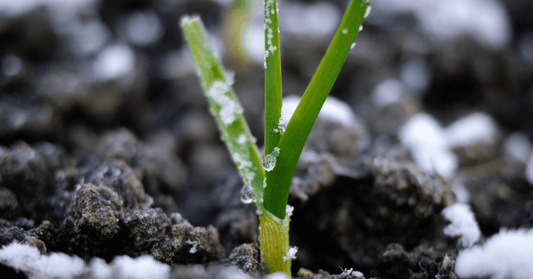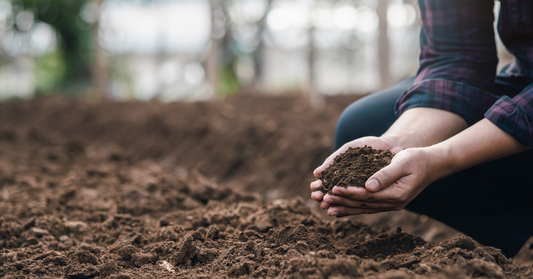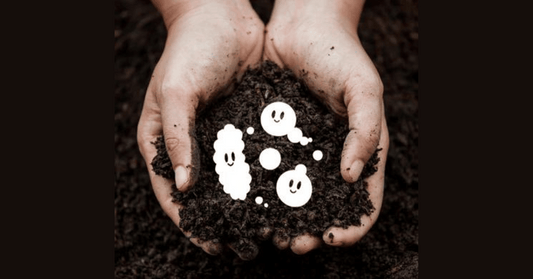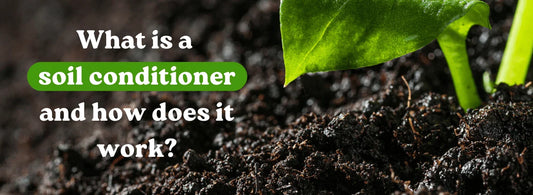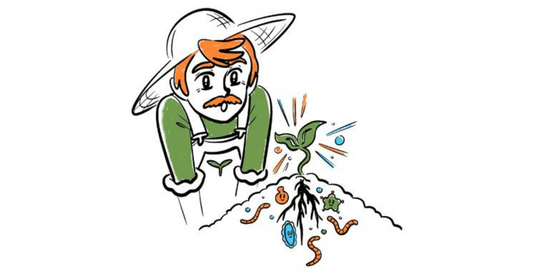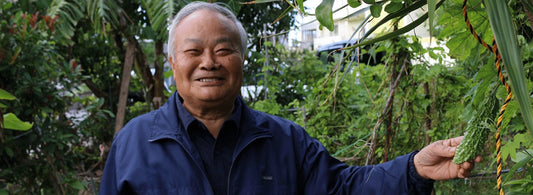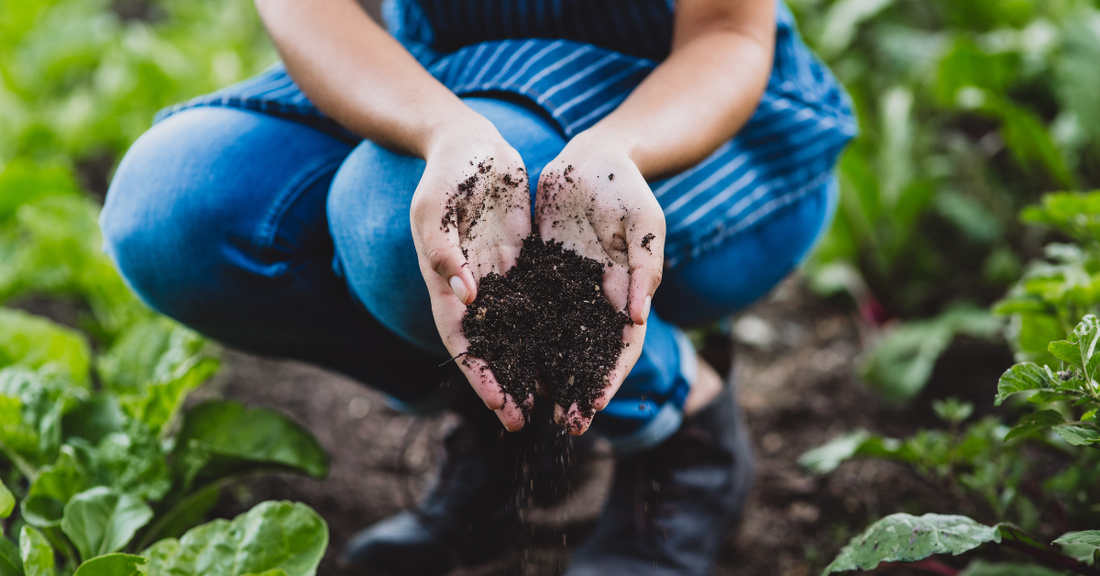
Living Soil: Is Your Soil Conscious?
Beneath our feet lies a world teeming with life, a complex ecosystem that thrives in the dark, rich depths of the Earth's crust. But have you ever stopped to wonder if the soil beneath your feet is more than just a mix of minerals and organic matter?
The idea of soil consciousness may seem far-fetched at first, but as we begin to unravel the intricate web of life that exists within the soil, we start to see a picture of a complex, interconnected system that exhibits many of the characteristics we associate with living, sentient beings.
From the billions of microorganisms that call the soil home to the intricate networks of fungi that facilitate communication and nutrient exchange between plants, the soil is a bustling metropolis of life and activity.
As we explore these ideas, we invite you to open your mind to the possibility that the ground beneath your feet is more than just dirt, but a living, breathing entity that deserves our respect and care. By understanding and nurturing the consciousness of our soil, we can build a more sustainable, resilient future for ourselves and for generations to come.

Is Soil Living?
First, we must explore the fundamental question: is soil living?
To answer this, let's examine the characteristics that define life and how soil exhibits these traits.
Soil Life Cycle
Life is characterized by key attributes, including reproduction, growth, response to stimuli, homeostasis, complex organization, and metabolism.
The soil life cycle encompasses the continuous processes of growth, death, decomposition, and renewal within the soil. This cyclical process ensures that the soil remains healthy and productive over time.
Soil organisms reproduce, grow, and respond to stimuli in their environment. Bacteria divide and multiply, fungi extend their mycelial networks, and plants communicate with soil microbes through chemical signals.
How is Soil Living
Soil is a dynamic, living ecosystem that supports a vast array of life forms, from bacteria to fungi and invertebrates. These organisms work together to drive essential processes like nutrient cycling, decomposition, and soil structure formation, mimicking the characteristics of life itself.
A diverse soil community is better equipped to withstand stresses and support the ecosystem's overall functioning. The interactions between soil organisms create a complex network of relationships that mirror the characteristics of conscious systems.
While soil may not exhibit consciousness like animals or humans, the intricate web of life within the soil suggests that it is more than just an inert substrate. By recognizing the living, dynamic nature of soil, we can appreciate its importance and develop strategies to sustain this vital ecosystem.

What’s in a Hand of Soil
A single handful of healthy soil is teeming with billions of microbes, a diverse array of life that is both awe-inspiring and essential for the vitality of our ecosystems. Here is a closer look at the world of these tiny inhabitants and their crucial roles in the soil.
The Microbes in Your Soil
In just one gram of soil, you can find up to one billion bacteria, representing thousands of different species. These microscopic powerhouses are heroes in the soil world, quietly working to decompose organic matter, cycle nutrients, and maintain the very structure of the soil itself.
Among these bacteria, you'll find specialists like Rhizobium and Azotobacter, which possess the incredible ability to fix atmospheric nitrogen, converting it into a form that plants can readily use. This process is vital for plant growth and plays a significant role in the fertility of our soils.
Fungi, too, are key players in the soil microbiome. Mycorrhizal fungi form intricate networks, connecting with plant roots in a symbiotic partnership. These fungal allies help plants absorb water and nutrients, while in return, they receive carbohydrates produced through photosynthesis. This mutually beneficial relationship is a cornerstone of plant health and productivity.
The Soil Food Web
Beyond bacteria and fungi, a handful of soil also contains a myriad of other organisms, including protozoa, nematodes, and arthropods. These creatures form a complex soil food web, each playing a specific role in maintaining the balance and function of the ecosystem.
Protozoa, for example, feed on bacteria, helping to regulate their populations and release nutrients back into the soil. Nematodes, on the other hand, can be both beneficial and detrimental, with some species helping to control pest populations while others parasitize plants.
The Importance of Soil Biodiversity
The staggering diversity of life in soil is not just a curiosity; it is a necessity. A diverse soil microbiome is more resilient to stresses, better equipped to suppress plant diseases, and more efficient at cycling nutrients. In short, soil biodiversity is the foundation of healthy, productive ecosystems.
By nurturing this diversity through practices like reducing tillage, using cover crops, and applying organic amendments, we can promote the vitality of our soils and the countless microbes that call them home.

Soil Intelligence: How Soil Functions
Beneath the surface, soil is a complex and dynamic system that exhibits remarkable intelligence in its functions and processes. The intricate networks of microorganisms, roots, and minerals work together to create a self-regulating, adaptive ecosystem that supports life on Earth.
The soil microbiome acts as the "brain" of the soil, with billions of microbes communicating and forming interconnected networks. Mycorrhizal fungi, for example, create underground "highways" that allow plants to exchange nutrients, water, and warning signals, enhancing the resilience of the ecosystem.
Soil intelligence is evident in the way it efficiently cycles nutrients and manages waste. Diverse communities of microbes work together to break down organic matter, releasing essential nutrients back into the soil for plants to use. This process ensures that nothing goes to waste and that nutrients are continuously recycled.
Additionally, soil is constantly evolving and adapting to changes in the environment. When faced with stresses like drought or disturbance, the soil microbiome can shift its composition and functions to maintain stability and support plant growth. This adaptive capacity highlights the intelligence and resilience of soil.
Does Soil Have Consciousness
It’s clear that soil has a living component, but does that suggest that soil has consciousness? While the idea may seem unconventional, there are compelling reasons to consider the possibility.
Consciousness is often associated with self-awareness, perception, and the ability to process information. When we look at the intricate networks and interactions within soil, we see a system that exhibits remarkable adaptability, responsiveness, and even a form of communication.
The soil microbiome, with its billions of microbes working together, resembles a neural network, processing information and responding to stimuli in ways that are not unlike the functioning of a brain. Mycorrhizal fungi, for example, create vast underground networks that allow plants to share resources and warning signals, suggesting a form of collective intelligence.
Moreover, soil exhibits emergent properties, where the interactions of individual components give rise to complex behaviors that cannot be explained by the sum of their parts. This phenomenon is a hallmark of conscious systems, from the brain to social networks.
While we may not yet fully understand the nature of soil consciousness, exploring this idea opens up new perspectives on our relationship with the Earth. By recognizing the intelligence and awareness within the soil, we may develop a deeper appreciation for this vital resource and the role it plays in sustaining life on our planet.

The Human Connection: Soil Health and Agriculture
As we start to wrap our heads around the idea that soil might have a kind of consciousness, it's pretty clear that the way we interact with this essential resource has a huge impact on our own lives and the well-being of the Earth.
Throughout history, human activities have had a significant impact on soil health and biodiversity. The rise of industrial agriculture, with its reliance on monocultures, heavy tillage, and synthetic inputs, has led to the degradation of soil ecosystems worldwide.
Practices such as the overuse of pesticides and fertilizers have disrupted the delicate balance of soil microbiomes, reducing biodiversity and compromising the ability of soil to perform essential functions like nutrient cycling and carbon sequestration. This degradation not only affects the productivity of our agricultural systems but also has far-reaching consequences for the environment and human health.
Recognizing the importance of soil health is crucial for the development of sustainable agricultural practices. By adopting methods that work with, rather than against, the intelligence and consciousness of soil, we can create more resilient and productive food systems.
Practices such as conservation tillage, cover cropping, and organic farming help to promote soil biodiversity, enhance nutrient cycling, and improve soil structure. These approaches not only benefit the soil ecosystem but also lead to healthier crops, reduced erosion, and improved water retention.
By supporting the health of the soil, we can create agricultural systems that are more adaptable to the challenges posed by climate change. Healthy soils with diverse microbiomes are better equipped to withstand stresses such as drought, flooding, and temperature extremes, ensuring the long-term stability of our food supply.

Cultivating Consciousness: Practices for Soil Health
Now that we've explored the concept of soil consciousness and its importance for our planet, you might be wondering what you can do to support and nurture this vital ecosystem. The good news is that there are plenty of practical steps we can all take to cultivate healthy, vibrant soil in our own backyards and beyond.
Composting: Feeding the Soil
One of the easiest and most effective ways to support soil health is through composting. By recycling organic waste like food scraps, yard trimmings, and even paper, we can create a nutrient-rich amendment that feeds the soil and supports the billions of microbes that call it home.
Composting not only reduces waste but also helps to improve soil structure, retain moisture, and suppress plant diseases. Plus, it's a fun and rewarding way to get in touch with the soil and be part of the natural cycle of growth and decay.
Cover Cropping: Protecting and Enriching the Soil
Another powerful tool for cultivating soil consciousness is cover cropping. By planting crops like legumes, grasses, and other plants in between main crops or during off-seasons, we can protect the soil from erosion, improve its structure, and add vital nutrients.
Cover crops also provide habitat for beneficial insects and microorganisms, promoting biodiversity and resilience in the soil ecosystem. And when they're tilled back into the soil, they act as a green manure, feeding the soil and supporting the growth of future crops.
Reduced Tillage: Minimizing Disturbance
While tillage has long been a staple of conventional agriculture, we now know that excessive disturbance can disrupt soil ecosystems and compromise their health. By adopting practices like no-till or reduced tillage, we can minimize our impact on the soil and allow its natural processes to thrive.
Reducing tillage helps to preserve soil structure, maintain moisture, and protect the delicate networks of fungi and other microorganisms that are essential for soil health. It also reduces erosion and can even help to sequester carbon, making it a win-win for the soil and the climate.
Supporting Organic and Regenerative Agriculture
Beyond our own gardens and farms, we can choose to buy from producers who prioritize soil health and regenerative practices. Organic and regenerative agriculture are built on the principles of working with the soil, rather than against it, to create sustainable and resilient food systems.
By voting with our dollars and supporting these producers, we can help shift the agricultural landscape towards practices that nurture soil health and biodiversity. We can inspire others to join the movement and become stewards of this precious resource.

Reconnecting with the Soil
Cultivating soil consciousness is a journey that begins with awareness and grows through action. Beyond the practical benefits of sustainable agriculture, fostering a deeper connection with soil can have profound implications for our personal and collective well-being. By recognizing the living, conscious nature of soil, we can develop a greater sense of respect and appreciation for the natural world.
This connection can inspire us to become better stewards of the land, making choices that prioritize the health and vitality of soil ecosystems. Whether through supporting local, organic agriculture or engaging in practices like composting and gardening, each of us has the power to contribute to the well-being of soil and, by extension, the well-being of our planet. It’s time to get your hands dirty and go play in the soil.
